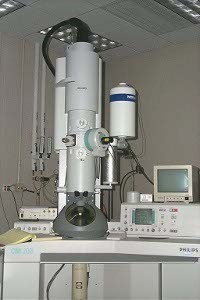The Tyndall Effect refers to the reflection of light as it comes in contact with small particles in a translucent medium. It involves the scattering of light in different colors depending on how short or long a particular wavelength is. For example, the Tyndall Effect can describe the haze seen as light travels through a window covered in dust or the light from a flashlight comes in contact with fog in the air. In these situations, dust and water droplets cause the light to be reflected in a scattered pattern towards the viewer.
How the Tyndall Effect Works
According to the Tyndall Effect, light is reflected off of particles that are slightly below or near the size of a wavelength of light. Depending on how much light a particular material absorbs, a different color is emitted. Shorter wavelengths of light tend to be scattered more than longer wavelengths. For example, the iris of a human eye is generally blue, green, or brown, depending on how much melanin the iris contains. Melanin is a material that absorbs light, causing less light to be scattered. An iris with large amounts of melanin appears to be darker because less light is reflected back into the air. An iris with little or no melanin appears to be lighter, usually blue or green, because these colors have shorter wavelengths.
Applications
The Tyndall Effect can be seen regularly in daily activities. For example, the Tyndall Effect is what causes the sky to appear to be blue. This is because sunlight is scattered as it enters the Earth’s atmosphere and passes through billions of small particles in the air such as dust, water droplets, and other debris. Once again, because blue has the shortest wavelength of any color of light, it is the color that is predominantly seen. The Tyndall Effect is also used for industrial purposes, such as determining how big or dispersed particles in an aeresol, gas, or other colloidal matter is.
Advantages
The Tyndall Effect has several beneficial properties. It allows a viewer to see what kind of small particles are floating in the air or other translucent medium and how many of those particles are present. This can be especially helpful in situations where chemicals, debris, or pollutants can be found on a regular basis.




Follow Us!